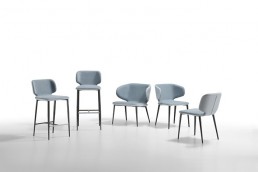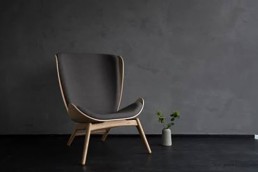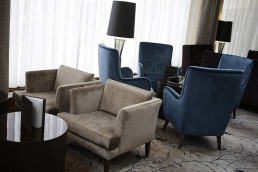Andrew Reynolds on 20 years of Curtis Furniture
With roots that can be traced back to 1852, Curtis Furniture prides itself on a long history of quality furniture manufacturing. Having established its current name – and a niche in designing, manufacturing and installing hotel furnishings – in 1998, and operating today from a 45,000ft² factory in South Leeds, the company this year celebrates its 20th anniversary in its current form. With upcoming projects including the supply of fittings for what will be the first Hard Rock Hotel in the UK, Sleeper talked to Managing Director Andrew Reynolds about the evolving market, collaborations and what’s next.
In the 20 years Curtis Furniture has been active, how has the market changed, and how has the brand responded to those changes?
When we first started out a lot of the time the hoteliers owned the hotels themselves, and those hotels had buying teams. It was a lot more focussed, but with the rise of the franchise developments – and brands not just holding one brand anymore – there is a lot more to know, and this has driven us to continually be learning and developing our pieces in tandem with the quickly evolving market.
In terms of the products, how has the aesthetic developed?
I think a lot of the changes have been in response to technology. We used to produce a lot of TV armoires, and they were the size of coffins – when TVs were two feet deep it was a necessity. Certainly around the television we’ve seen a lot of change in aesthetics. The focus on design integration means that when guests lie in bed they want a place to charge their phones as well as power points, USB sockets and WiFi connectivity. As a result we’re a lot more tied in with the M&E side of things, and so these interior schemes have a lot of great new perspectives and ideas going into them.

What projects have you been involved in recently?
We’ve just done the first set of the new IHG formats for Holiday Inn. We developed with them a set of plug and play furniture which drastically reduces time on site – they have essentially one feed into the room and the furniture arrives fully integrated with power, telephony and connectivity. It carries all the connectivity and power guests want today, and so it’s incredibly useful for both designer and guest.
What’s the collaboration process like with hotels?
Most of the clients have their own in-house designer they’ve appointed that ensures the hotel, as a whole, is coordinated. Our speciality is in the guestroom, and our role is to ensure that, in its detailed format and manufacture, our pieces stand the test of time, meaning that they both look good and stay strong. These are environments used by many people. We have to make sure it lasts, is durable, and is ergonomic as well. The designer will get a beautiful room, but we’re there to support them in terms of balance, and to impart our knowledge of how guests use furniture. Where interior designers have the huge task of creating the big picture, we can provide 20 years of niche, very detailed knowledge of the bedroom space.

In which projects has this collaborative process has worked particularly well?
I’d certainly mention the IHG work, but we’re also part way through working at The Cumberland Marble Arch, which will be the first Hard Rock Hotel in the UK. I think this has been a great project because there has been a confident approach from their side regarding the guestrooms, and a real investment in the furniture. No one wants any surprises, including us, and together we went through a long sampling process that tracked the materials, finishes and textures right from the beginning, from A4-sized sheets to fully functioning sample rooms. This way the stakeholders, the owners and crucially the housekeepers have their say. It’s the perfect way to make sure that these spaces work eight years down the line as well as they do on opening day. A guest staying in that room may not realise that the conversations surrounding the details of the space have been going on years before it opened.
What are the most important lessons you’ve learnt in 20 years of production?
In the early days there was the assumption that we’d make beautiful furniture and everyone would be happy. The most important thing I’ve learnt is that making of the furniture is massively important, but in a complex project it is the ability to deliver that counts. Making the correct piece, to the right size, to the right handing, for the right room, on the right day. Ensuring it is installed to the client’s satisfaction; that ultimately means more that just the factory, and is achieved by developing a team of six project managers here that can be a point of contact for the client from start to finish, giving them the support they need.

Do you have any anniversary celebrations planned?
We’ve got a few events planned for the people who work here, quite a few of whom have been here for the whole journey, so they’re the ones who have made it possible. It’s something we’re very proud of, 20 years seems to have gone in a blink but when I look around I do think to myself it’s a real achievement, especially in a turbulent industry.
What are the brand’s plans for the future?
We make all our furniture here in Yorkshire, and where there may have been periods when people have questioned that it has been hugely valuable to us, and we’re now more certain than ever that it’s the right choice. It’s a focused operation, and what we’ve got planned for the future is continued investment in the people and the plant we have here. We’re happier than ever, more competitive than we’ve been before, and as such we’re able to offer better value to the customer.
Related Posts
15 November 2018
Furniture Fusion extends Wrap collection
7 February 2018
Vita Copenhagen unveils Furniture Feelings
17 February 2015




